- Creaig Dunton
- Albums and Singles
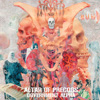
While Yasutoshi Yoshida is not nearly as prolific as he was in the early days of Government Alpha, the result has been a "quality over quantity" approach, much like the Incapacitants, and the opposite extreme from the likes of Merzbow and Dissecting Table. This not only makes each new release something I look forward to, but also seems to ensure what he does put out stays of exceptional quality. Exemplified by this single: no shtick, no pretense, just a great 7" from one of the masters.
In a noise world filled with poorly dubbed but ultra limited tapes and a multitude of sloppy CDRs thrown together almost as an afterthought, there is a nostalgic charm about this single, reminding me of my earliest forays into the genre.Back then an Aube or Pain Jerk 7" was something special.Due to the cost of pressing, it was a release that both the artist and label took very seriously.Altars of Precogs has that same feeling to it, albeit with full color art of Yoshida's collage work rather than those older Xeroxed sleeves.
The wet, sloppy undulating noise of "Flux" has a kinetic feel to it, not going for the stagnant wall noise thing, but at the same time being a bit more consistent than the jumpy quick edits of a Pain Jerk track.Acidic sheets of noise, slowed down dental drills, and cosmic flanged tones cluster together in complex, intermingling layers.
On the flip side, "Purge" sounds like screeching tires and sine wave drones, slowly rising and falling over chirpy noise bursts.It has a relentless push, but has a more stuttering and erratic feeling compared to the expansive waves of "Flux".Towards its end it comes across like an engine that is ready to die at any moment, but continues chugging on a bit longer until it comes to its inevitable end.
This may sound like a backhanded compliment, and by no way do I mean it to, but Altar of Precogs is simply a great noise single, nothing more. It does not need to be anything else.Yoshida continues his streak of making compelling noise that sounds like him, but never becomes lost in a cloud of monotony.Highly recommended for any fan of noise, old school or new…just a solid, respectable slab of harsh noise by one of the best practitioners.
Read More
- Administrator
- Albums and Singles

A relatively new solo project out of Canada, Bryan W. Bray's discography is currently brief, but with releases such as this, I hope to see that list grow dramatically in the near future. Hints of drone metal, pure harsh noise, and unclassifiable experimentalism abound on this all too brief tape.
Few albums completely grab me the moment they start, but the miasma of guitar that opens "Glimpse of Overlapping Dimensions" did just that.Layered guitars that are dark and post-apocalyptically gray, but also ones that are soaring and ethereal float together in the no man’s land between evil drone and warm ambience in a tenuous balance, before a dense wall of static swallows both.The resulting sound has more in common with harsh noise than what preceded it, but with a sense of discipline and control to it.As it continues, identifiable guitar remains that that is reminiscent of some of Hijokaidan's earlier work.The outro of detached, echoing guitar is a perfect closer.
"Forest Passageway, Hallway to the Void" leads off more dissonant than its predecessor, with a buzzing interference cutting through the ringing guitar notes and expansive vibrations.Just as it seems to settle in comfortably, heavily processed noise sweeps in, all over the low and high ends of the spectrum to make for something again more reminiscent of Merzbow, albeit with a symphonic metal undercurrent.
"Birds Plunging through the Walls of the Ocean" launches right in with the noise, leading to a less dynamic track.The constant roar puts it in league with the Harsh Noise Walls subgenre, but with the guitar sound and careful variations deep in the mix, it is anything but static and monotonous.For what it is, it is very effective, although I think the more drastic evolutions in the preceding tracks give them an edge.
At three tracks and around 30 minutes in length, it feels almost just like a teaser for future works.Bray takes the unenviable task of mixing music and noise and having the results sound not only consistent, but extremely effective.The multitude of moods and sounds on this release are its greatest strength, from speaker destroying waves of harsh noise to pensive, echoing guitar notes.Together, the result is even more powerful.
samples:
- Glimpse of Overlapping Dimensions
- Forest Passageway, Hallway to the Void
- Birds Plunging through the Walls of the Ocean
 
Read More
- Administrator
- Albums and Singles
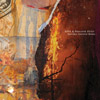 A collaboration between G. Stuart Dahlquist (formally of Burning Witch) and prolific French composer Philippe Petit is sure to elicit some dark, disturbing imagery, and on that front, Empires Should Burn definitely does not disappoint. With guest vocals from Edward Ka-Spel, Jarboe, and Bryan Lewis Saunders, the resulting album is a dark, though not impenetrable slab of metal hued experimental sound collage.
A collaboration between G. Stuart Dahlquist (formally of Burning Witch) and prolific French composer Philippe Petit is sure to elicit some dark, disturbing imagery, and on that front, Empires Should Burn definitely does not disappoint. With guest vocals from Edward Ka-Spel, Jarboe, and Bryan Lewis Saunders, the resulting album is a dark, though not impenetrable slab of metal hued experimental sound collage.
"Vocalists" is a designation used loosely in terms of this album, since all three artists' contributions are most closely aligned with spoken word performances, with each artist supplying their own texts.Ka-Spel's "And Empires Will Burn" is the most engaging in my opinion:comprising almost half of the disc's duration, the 23 minute performance melds clanging gamelan-like metal percussion and grimy noise textures that slowly creep along.The backing track makes slow, cautious changes throughout to keep variation, but not detract from the narration.
Ka-Spel's calm, dramatic delivery of his performance adds to the creepiness of both his words and the sound surrounding it.The two are in perfect harmony, where the words never overshadow the music nor vice versa.The narrative is absent for around the final third of the piece, where the sound takes the focus, increasing the amount of change and variation to be heard.
"The Star Implodes" pairs Jarboe's understated readings with clattering guitars and found sounds to excellent effect.Compared to many of the pieces on here, there is a greater sense of light and space to be heard, even if it is only hinted out."A Vision"'s reading by Lewis Saunders has an intentionally stilted, uncomfortable cadence to his whispered voice that just heaps on the discomfort.
There are two instrumental pieces included as well, which meld in perfectly with the overall fell of the album."Sweet Dreams Asshole" takes distant chiming bells and a creepy layer of noise, both of which could be cliché but instead come across quite effective in channeling a dark, sinister mood that is only exacerbated by Dahlquist's seemingly wordless snarls."Apocryphatic_Ally" follows Jarboe's performance to close the album, and plunges it again into darkness with cautious restraint; electronic tinged noises abound but never lose a natural, uncomfortable organic feel.
I am usually not one fond of spoken word performances, as I feel too often they come across not only as pretentious, but also tend to overshadow any musical accompaniment they might have.On Empires Should Burn, they feel less like that traditional style, but more like a collection of ghost stories with sonic accompaniment.The fact that both the words and music are captivating is no easy task, and I can’t think of any time it worked so well other than Velvet Underground's "The Gift" or Wire's "The Other Window."
samples:
 
Read More
- Creaig Dunton
- Albums and Singles
 While he has been an extremely active artist in the past 20 years as the leader of Circle, as well as a member of Split Cranium, Pharaoh Overlord, and a multitude of other projects, Interlude for Prepared Beast is only his second solo work. Both of the chaotic, hyperactive sides of this tape are unquestionably unique and fit into no existing category.
While he has been an extremely active artist in the past 20 years as the leader of Circle, as well as a member of Split Cranium, Pharaoh Overlord, and a multitude of other projects, Interlude for Prepared Beast is only his second solo work. Both of the chaotic, hyperactive sides of this tape are unquestionably unique and fit into no existing category.
"Caterpillars" starts off with a swarm of clicky percussion and choppy, almost haphazard guitar stabs in an intentionally messy mass.A second guitar track of slower, almost mournful notes comes in, diametrically opposed to the chaotic background, yet clicking together comfortably.Vocals alternate between guttural growls and monastic chants.Toy keyboards and a dense crescendo of guitar come together to create some extra weird hybrid of '70s metal and free jazz skronk, while still being greater than the sum of those parts.
On the flip side, "Here Come The Cranes" comes in full force, with shambling drums and scraping guitar, offset by a more disciplined bass line.Beyond all reason it eventually locks into a fusion jazz sound before becoming a squealing guitar and guttural vocal mess.Just as it reaches its peak of dark, ugly noise, a prog rock synth comes in and shakes everything up, with an outro of Rick Wakeman-style keyboards and dirty guitar noise.
To say Interlude for Prepared Beast ignores genre boundaries and conventions is an understatement.Instead, Lehtisalo has assembled an album that gleefully sounds like a composer in the throes of unmedicated ADHD, throwing random thoughts and ideas together that, for the most part, work.It is a messy, sprawling, chaotic work, and all the better for it.
Read More
- Administrator
- Albums and Singles
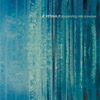 Having been around since the early part of the 1990s, this duo of Lino Monaco and Nicola Buono seem as if they took their cue from that periods isolationist movement, that darker, bleak spin-off of ambient that had a short, but brilliant life. Heavily effected loops, guitars, and synths float together in an inviting dissonance throughout this album's six tracks.
Having been around since the early part of the 1990s, this duo of Lino Monaco and Nicola Buono seem as if they took their cue from that periods isolationist movement, that darker, bleak spin-off of ambient that had a short, but brilliant life. Heavily effected loops, guitars, and synths float together in an inviting dissonance throughout this album's six tracks.
Opener "Synth on Axis" (with guest collaborator Heidseck) and the closing title track embrace the album title literally, both conjuring images of drifting through aquatic murk.Slow, bubbling reverberations, bass heavy swells, and unidentifiable sounds slithering by feel like the oceanic equivalent of Thomas Köner's Arctic endeavors.
"Attrazione Magnetica" takes that sense of drift and exploration and casts it in a more cosmic sensibility.Loops of rhythmic guitar, heavily filtered and processed, arrive to just drift away again into the darkness.Between the overall darker mood and the erratic, sub bass swell that is monstrous on its own, there is a more sinister feel overall, although here it is blackness of space rather than our own seas.
The remaining pieces don't have as much of an environmental reference point, but instead construct slowly evolving ambient passages from heavily treated loops."Freezing the Fourth String" begins simple enough, with an unending droning note that becomes more and more prominent, slowly augmented with other abstract loops, before finally what sounds like a symphonic sample is added in, casting everything in a much more melodic direction before slowly concluding.
"Moonshine" similarly takes its time, building upon a simple, but progressing melodic loop.There is just the right balance of repetition and change:it stays static enough to lock into a hypnotic groove, but slowly works in additional sounds so that, by the end, it sounds significantly different than how it began.
Isolationist ambient constructed from loops can be a difficult proposition:one of the reasons the genre died out so quickly is that almost everyone with a sampler and a reverb unit tried their hand and putting out an album, and too often the result was a boring sonic equivalent of beige wallpaper.While Retina.it are not necessarily revolutionizing the genre with Descending Into Crevasse, it makes for a strong nod to a sound that time forgot, and had it been released during that period, it would have been clearly on the better end of that genre’s spectrum.
samples:
 
Read More
- Duncan Edwards
- Albums and Singles
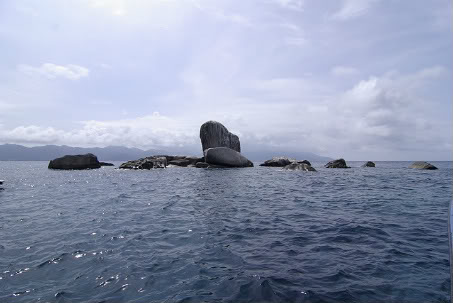 I don't know if there is much surfing in their Massachusetts location but Zebu!'s eighth record is mainly powered by waves of surf-instrumental tunes. Chill Wave twists a retro beach party vibe into something more bracing, brooding, and raw: as suggested by the LP cover with overcast sky and big lump of rock sticking up out a cold, dark stretch of ocean.
I don't know if there is much surfing in their Massachusetts location but Zebu!'s eighth record is mainly powered by waves of surf-instrumental tunes. Chill Wave twists a retro beach party vibe into something more bracing, brooding, and raw: as suggested by the LP cover with overcast sky and big lump of rock sticking up out a cold, dark stretch of ocean.
The core duo of Steve D'Agostino and Ted Leo are joined by bass players Jonathan Granoff and Stephen Surrett along with Peter Van Siclen on saxophone and they all whip up a trash aesthetic that thankfully avoids annoying slovenliness. Not everyone enjoys the saxophone in rock music but Zebu! combine guitars well with the abrasive honking for a sound that is refreshing and exciting without seeming over-muscled.
A couple of contrasting slower pieces allow for vocals and "Crown Heights" might even be described as country-surf, but generally Zebu! keep things brisk and succinct. Ultimately it doesn't matter if this record were recorded by people with sand in their hair and fresh out of a wetsuit. We can't all be Dennis Wilson, and elements of surf music are audible across the last 50 years of popular music from Phil Spector and Joe Meek to Jesus & Mary Chain, none of whom have been anywhere near a surfboard.
This broad context is where the odd out-of-time Chill Wave fits, if anywhere, and certainly more so than a music sub-genre of calming neon-club repetitive beats which the title might appear to indicate. The LP is in an edition of 300 and a fine reminder of how great it is to hold a piece of vinyl, admire decent-sized cover art, and not have to squint to read minuscule words on a CD booklet.
Read More
- Administrator
- Albums and Singles
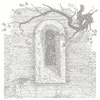 Æthenor’s En Form for Blå was one of my favorite albums of 2011, and it was the first time Stephen O’Malley and Steve Noble collaborated on record. St. Francis Duo documents their second meeting, a pair of live performances at London’s Cafe OTO recorded over two nights in August, 2010. With only guitar, percussion, and some distortion, O’Malley and Noble punch out over an hour of very raw and dynamic improvised music. Like their work together in Æthenor, it hews closer to the rock spectrum than to jazz or other kinds of improvised music, but it is their quieter interactions that make this album so satisfying.
Æthenor’s En Form for Blå was one of my favorite albums of 2011, and it was the first time Stephen O’Malley and Steve Noble collaborated on record. St. Francis Duo documents their second meeting, a pair of live performances at London’s Cafe OTO recorded over two nights in August, 2010. With only guitar, percussion, and some distortion, O’Malley and Noble punch out over an hour of very raw and dynamic improvised music. Like their work together in Æthenor, it hews closer to the rock spectrum than to jazz or other kinds of improvised music, but it is their quieter interactions that make this album so satisfying.
I was blown away by Noble’s performance on Æthenor’s En Form for Blå. His drumming made that album, in part because it provided such a strong foundation for his band mates. It was also virtuosic, meticulous, and totally unique. Noble brings that same leadership and energy to St. Francis Duo, which was recorded with Stephen O’Malley at Cafe OTO two months after the En Form sessions ended. But, when I read that Daniel O'Sullivan and Kristoffer Rygg were not involved, I wondered just how Noble and O’Malley were going to react to each other. I imagined droning feedback and whirlwind percussion passing like ships in the night.
St. Francis Duo sounds excellent, though, and it sounds excellent because Noble and O’Malley find a subtle way to make their styles work together. From beat one Noble makes it clear that he’s not going to be swallowed up by O’Malley’s guitar. He pounds out loud, absolutely manic rhythms on his toms, snare, and cymbals for close to three minutes before settling into a dizzying procession of smaller percussive noises. Throughout the record, he answers O’Malley’s more frenzied moments with huge slashes of reverberating metal, thumping bass kicks, and generally unhinged fills, but he also directs the action with his battery of brushes, wires, tuning forks, and rattles.
O’Malley also begins furiously, with feedback and in-the-red string mashing. When Noble shifts gears, he reacts coolly. He turns down the volume and dials back the intensity, switching to a series of slowly played half-melodies made up of dissonance and little bouts of fumbled rhythm. As time passes and Noble moves further into the spotlight, Stephen’s playing becomes close to silent, and there are times when I can almost hear him deciding to pluck a string. Noble’s playing remains tense and propulsive, though, even when O’Malley is at his most reserved. He provides a feeling of forward motion with every sound he makes, even the tiniest ones, so that by the end of the first set he’s put the duo in an ambiguous place. This is improvised music, but with a heavy metal feel that comes almost entirely from the drummer, who is probably best known for playing with musicians like Derek Bailey, Lol Coxhill, John Edwards, and Alex Ward. Hearing him work with O’Malley in this style is awesome, and it further convinces me that he’s one of the best percussionists going.
On the second night, O’Malley returns the favor as the music veers a little further away from the rock ‘n’ roll vibe. Steve and Stephen still give the audience some noisy passages to chew on (side D closes the album with a bang), but the best action takes place when O’Malley opens his playing up even more and ventures into atmospheric territory. Stephen’s restraint gives Noble the chance to show off his dynamics more, but it also forces him to play the guitar in a way I’ve never heard him play it, and it sounds great. He still pulls a drone and a chord or two from his six-string, but without high volumes to lean on, he has to find other ways to respond to Noble’s never-ending variations. I can’t tell for sure, but I think O’Malley might have even stuck a fork or screwdriver between his strings at one point, perhaps imitating the way Noble treats his drums. Should O’Malley choose to continue down this path on future recordings, I would be anxious to hear it. St. Francis Duo is more strong evidence that he doesn't need robes or amps that go to eleven to make great music.
samples:
 
Read More
- Administrator
- Albums and Singles
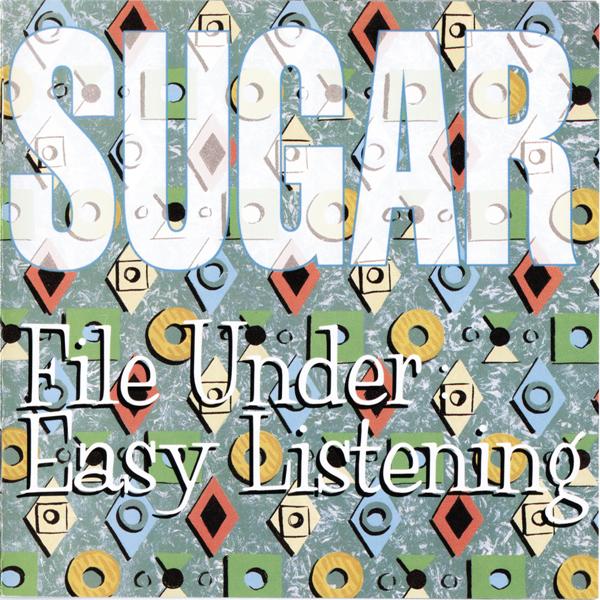 Once again a remaster job with meticulous attention to detail along with a set of bonus material and copious first-hand accounts have allowed me to appreciate a release much more than I originally had. Sugar's last album can still be a difficult listen but I think I'm ready to love it.
Once again a remaster job with meticulous attention to detail along with a set of bonus material and copious first-hand accounts have allowed me to appreciate a release much more than I originally had. Sugar's last album can still be a difficult listen but I think I'm ready to love it.
Edsel
After a whirlwind success in 1992 and 1993, the three-piece Sugar were burning out. Life on multiple continents had been taking its toll on the group, despite the fact that it consisted of three seasoned veterans of the road. Confident from the success of Copper Blue, the band thought they could do the album themselves and attempted to record in an Atlanta area studio made famous by Hole and Smashing Pumpkins. It was a bust and the recordings were scrapped. They picked up again outside of Austin and once again employed a co-producer, recorded in a reverse direction from Copper Blue (described as top-down instead of bottom-up: drums were recorded last instead of first this time), and the result has some pretty damn awesome moments.
I remember how a few Mould/Husker/Sugar fans and I would often disagree on FU:EL, on which are the standout songs or how good the album actually was. Eighteen years later, reading Bob's reflections on the album in the liner notes, the picture becomes a lot clearer: side A was the "rock" side, side B was the "country" side, and the fictitious side C, or the "b-sides," were something more of a continuation of the Copper Blue vibe.Back in 1994 I remember gravitating more to the more emotional side of the album, with the kicking, screaming, bleeding heart of a performance on the closing "Explode and Make Up," and the simple yet catchy hit single "Believe What You're Saying," but with the remaster I can feel the depth of the rock tunes like "Gee Angel" and "Granny Cool" much more in my gut than I recall. "Your Favorite Thing," however, remains a favorite both back then and now, even though it's admittedly a ripoff of My Bloody Valentine's "Blown a Wish."
Songs from the B-Sides like "Frustration" and "And You Tell Me" make me wonder how they didn't end up on the original record, but it was clear that the album should have stood at 10 songs. Everything is included on this reissue along with the "Campfire Mix" of "Believe What You're Saying" along with the show recoreded in November 1994 in Minneapolis, originally released as the bonus second disc to the Besides compilation. Once again a DVD is included of promotional music videos from the album as well as TV performances. In all honesty, one DVD could have fit all the material from these three reissues, however not having them, such as the Merge versions of the reissues, is a far greater insult.
While I love FU:EL at this point, it still doesn't hold a candle to Copper Blue, an album which was a relentless repetition of knockout caliber punches. FU:EL has some fantastic moments and brilliant songs but it can't measure up as a whole. Rather than fight to recapture those moments, the group allowed numerous external factors to win: Bob Mould relocated to Austin and David Barbe bowed out to keep up with the increasing demands of his family. It also didn't help that a big feature in Spin Magazine came out, focusing more on Mould's sexuality than the new album, Creation was bought by Sony, Kurt Cobain died, and the tastes of the music-buying public was shifting. I can't imagine Mould or even a reformed Sugar could play another stadium tour however the fans from pre- and post- Sugar will most certainly remain loyal.
Read More
- Administrator
- Albums and Singles

With both albums out of print for a number of years, Michael Gira has (somewhat surprisingly) not only saw fit to present these two in their original forms, but as a deluxe vinyl box set (or less deluxe CD), expanded with a disc of period-specific rarities and outtakes. What was originally a drastic departure from what everyone expected from Swans is now somewhat less so, and with almost an additional 25 years since White Light from the Mouth of Infinity, their place in Swans' impeccable catalog makes perfect sense. Even removed from that, however, they are an exceptionally strong pair of American folk influenced albums that have lost none of their force or impact to this day.
The second major phase of Swans' career (roughly from the late 1980s to the mid 1990s) has always been a contentious one, for artist and fan alike.Many decried the shift away from the violent, seething, belligerent sound that characterized seminal records such as Cop or Filth, into a more melodic one as an example of the now-novel concept of 'selling out."The move towards actual song writing and melody has also been blamed on Jarboe's increased presence in the band.Gira himself had spoken dismissively about these albums in interviews, and during the first reissue campaign in the late 1990s, these two albums were cherry picked and mixed with rarities from the era as the tellingly titled Various Failures.
In hindsight, the confusing birth of these records is understandable.The band's more song-oriented focus started in earnest with 1989's The Burning World, a record that has all but been disowned by the band.Which, I can understand.I personally do enjoy that record quite a bit, but it does not sound like Swans before, or after.Surely the heavy-handed influence of a major record label infringed on the creation of the album quite a bit, as did the notable (though likely well intentioned) production by Bill Laswell and his cadre of session players.
The follow up, White Light From The Mouth of Infinity, was in a way a return to form.The no wave aggression and blunt force musical approach was dispatched in favor of songwriting that focused more on melody than just mood. In addition, there was an expanded instrumental template that heavily featured acoustic guitars as well as an increased use keyboards, all with Gira singing, rather than barking and bellowing like a drunken thug.But the intensity had not waned at all.Perhaps it is clearer now in the post-My Father era that the purer approach and development as songwriters was actually instituted nearly 25 years ago.
The lyrical content and associated themes were still there as well.Those early albums and singles were seething with disgust and hatred, much of which was directed inward.A song like "Better Than You" may not be as aggressively blunt as "Cop," but it is anything but a romantic ballad.Additionally, "Failure" is as self-loathing as music can possibly can get, but presented in a country-tinged song rather than pummeling riffs, a contrast that makes it an even stronger piece.Even when the lyrics seem to drift more into conventional territory, such as on the more ballad-like "Love Will Save You" or "Miracle of Love," the arrangements and dramatic presentation come with such a force that it rivals the intensity of any of their more violent moments.
Love of Life, which was released just a year later, does not stray far from the style of its predecessor, unsurprisingly given the relatively short span of time between their creation.The bombast of "In The Eyes of Nature" and "The Golden Boy that was Swallowed by the Sea" could have appeared on White Light and fit in perfectly."Her" may feature a similar stripped down acoustic sound akin to "Failure," though with uncharacteristically intimate lyrics and calmness that results in one of the band’s most sensitive songs of their entire career, at least before the explosive second half.
The title song and "Amnesia" stand out as two fast tempo songs of grandiose rock music, which I mean in the most complimentary of ways.Both feature rapid fire, almost martial rhythms that are like the band giving a nod back to the industrial edged sound of the Greed/Holy Money era, but with layered keyboards and guitar stabs that bring back the dissonance without having the band repeat themselves.One notable development here is the introduction of the short, untitled interludes between some of the songs, a unifying compositional strategy that would be used again to brilliant effect on Soundtracks for the Blind.
The third rarities disc (presented on CD within the vinyl box as well) is a mixed bag.Many of the b-sides and other songs had appeared previously on Various Failures, so they are nothing revelatory.That’s not to dismiss them by any means:"Picture of Maryanne," for example, is even more delicate than "Her" and is just as achingly beautiful now as ever, and "You Know Everything" is still as hard hitting as anything that made it onto the two previously discussed records.The extended mixes of both "Love of Life" and "Amnesia" are here as well, though the latter is a minute or so shorter than the original single version for some reason.While both take the songs in new and different directions than their original forms, they both heavily feature loops and repetition characteristic of extended dance mixes that dull the impact of the original, more succinct songs.
Five songs from the side project Skin's Ten Songs for Another World album show up here too, which is an odd choice given that they technically are not by Swans (just Gira and Jarboe), and they also appeared previously on Various Failures.Additionally, there is only a small bit of live material extracted from the out of print Omniscience and Anonymous Bodies in an Empty Room albums; the inclusion of more would have strengthened this as a compilation."The Unknown" is the only song that I believe has not been available prior; an otherwise unrecorded live piece that presents this era of Swans in a rawer, less polished capacity that brings out the primal energy that underscores many of the songs of this era.I have no idea the depth of the archival recordings of this period, but it just makes me wish there were more unreleased works like this (or demo versions of songs) on the disc.
Having owned both original albums in this set, as well as Various Failures, I was most interested in the rarities disc, and unfortunately that did not break any significant new ground for me.That aside, White Light and Love of Life have been misunderstood, overlooked, and unfairly maligned in the past, so re-presenting them as the newest incarnation of Swans comes to its conclusion makes perfect sense.Looking at their entire career in a full historical context, it becomes crystal clear how these formative records, along with the beloved ones that came before them, fit in to the band’s ever-growing legacy and are no less significant or noteworthy than the most beloved albums.
samples:
 
Read More
- Administrator
- Albums and Singles
 The length of time elapsed between Kannon and the last Sunn O))) album proper, Monoliths and Dimensions, is over six years and the longest gap in the band’s career. This pause is unsurprising given the grandiose stylistic decisions the last album reached as far as production goes: choruses, strings, and horns made for an artistic peak that stopped just short of crossing that fine threshold between epic drama and self-absorbed pretentiousness. Kannon in some ways is a reboot of the project, returning back to the foundational sound of Greg Anderson and Steven O'Malley and their massive wall of amps. But rather than a cliché "back to basics" move, it is a record informed by their legacy, as well as their recent collaborations with Ulver and Scott Walker, that displays strong and significant artistic growth and development.
The length of time elapsed between Kannon and the last Sunn O))) album proper, Monoliths and Dimensions, is over six years and the longest gap in the band’s career. This pause is unsurprising given the grandiose stylistic decisions the last album reached as far as production goes: choruses, strings, and horns made for an artistic peak that stopped just short of crossing that fine threshold between epic drama and self-absorbed pretentiousness. Kannon in some ways is a reboot of the project, returning back to the foundational sound of Greg Anderson and Steven O'Malley and their massive wall of amps. But rather than a cliché "back to basics" move, it is a record informed by their legacy, as well as their recent collaborations with Ulver and Scott Walker, that displays strong and significant artistic growth and development.
The most striking aspect of the album is its (relative) brevity:three songs, with a total running time of a bit longer than a half hour.Considering the sprawling nature of their previous work, it almost seems oddly succinct.Even though there is a sense of returning to their more simple records, conceptually at least, the record features a number of guests and collaborators, with familiar names showing up on the roster. "Kannon 1," besides the core of Anderson, O'Malley, and Attlia Csihar, sees Oren Ambarchi on oscillators and Randall Dunn adding synths.From its shimmering, albeit noisy opening, the opening moments make for a first impression of a sound less dark and dismal than their other work.
The overall sound on this piece is stripped back to emphasize the droning riffs, with the electronic elements kept to a tasteful accent.Csihar’s guttural, throaty vocals add an additional dissonant component that, like much of their work, acts as a recontextualized trope of heavy metal, deconstructed and used to a very different effect.But within the decimating chords and demonic growls, there is an additional layer of nuance that can be heard.Rather than just coming across as a big sludgy riff, the guitars create dense tonal clusters that rapidly vacillate between noise and clean tone.
"Kannon 2" has sharper, more forceful guitar throughout it, with considerably massive amounts of sustain and feedback lingering after each hit of the strings.Compared to the piece before, the sound is harsher, more serrated and abrasive.The vocals here have a more monastic, chant-like quality that balances out the harsher approach of the guitar.The droning, hypnotic sense of repetition is also expanded upon, and the trio of synth players here (Dunn plus Steve Moore and Rex Ritter) especially shines through in the song’s closing moments.
The final composition comes together as a brilliant culmination of what preceded it on the album.Squalling guitar is offset by a pleasant counter-melody, as simple chord progressions and sustained tones result a powerful and complex atmosphere.Csihar’s vocal approach bridges that chasm between metallic growl and near religious chant, and get to just the right level of drama and bombast without becoming too over the top and pompous.As the trio soldier on, the vocals and guitar hit a pure and melodic peak, before loosening up to conclude the album.Even amidst the bleak, metallic guitars and blackened noise, the parallels with sacred music by the likes of Arvo Pärt are not at all hard to hear.
Kannon is not quite the sound of Sunn O))) hitting the reset button, but instead an intentional step back as an album and arrangement, emphasizing the core sound Stephen O'Malley and Greg Anderson began with on The Grimmrobe Demos.This is a record that strips down the band to their essentials, but one that is informed by a decade and a half of recording and performance.For a band that honed their identity with anything but understated sub bass and simple, caveman like riffing, Kannon is an powerful work that is a complex, and at times extremely beautiful album.It has its own consistent feel and sound within their discography, but stands out with its terseness and depth, two things that are not always associated with their work, but apply perfectly here.
samples:
 
Read More
- Administrator
- Albums and Singles
 Roberto Opalio's latest solo opus is an intriguing companion piece to My Cat is an Alien's recent Abstract Expressionism for the Ears, achieving its own uniquely altered state in a much more spontaneous, stripped-down, and (comparatively) brief fashion. Although it also contains a shorter piece built around Roberto's processed voice, the clear raison d'être for Aurora Coelestis is the 30-minute title piece, a shimmering, dream-like tour de force birthed from perhaps the least likely of sources: a glockenspiel.  Aurora is certainly a more modest effort than anything that MCIAA has been up to lately, but it is unquestionably its own strange and unique entity with its own pleasantly warped reality.
Roberto Opalio's latest solo opus is an intriguing companion piece to My Cat is an Alien's recent Abstract Expressionism for the Ears, achieving its own uniquely altered state in a much more spontaneous, stripped-down, and (comparatively) brief fashion. Although it also contains a shorter piece built around Roberto's processed voice, the clear raison d'être for Aurora Coelestis is the 30-minute title piece, a shimmering, dream-like tour de force birthed from perhaps the least likely of sources: a glockenspiel.  Aurora is certainly a more modest effort than anything that MCIAA has been up to lately, but it is unquestionably its own strange and unique entity with its own pleasantly warped reality.
The idea of a deeply psychedelic solo glockenspiel album is certainly one that courts incredulity, but the instrument lends itself to the task at hand surprisingly well.  In fact, an album like this could have probably only be made with such an instrument, though it sometimes sounds an awful lot like a vibraphone in this instance (though higher in pitch).  Of course, Opalio does not only use a glockenspiel to weave his spell: the sounds are all filtered through his self-designed "alientronics," which adds a lovely blurring and softening effect to the rippling notes.  For the most part, "Aurora Coelestis" is a quavering, bleary thrum, but avoids ever becoming static or fully settled.  The overall effect is a subtle yet beguiling one, as it is not so much a plunge into a new lysergic plane of consciousness as it is a gentle (but significant) tweaking of reality as it currently exists.  Like ambient music, it does not particularly demand my direct attention, but it adds a shimmering patina of quivering surreality to my immediate surroundings whether I give it that attention or not.  That said, it also holds up quite well to deeper, more focused listening, resembling an accumulating mass of uncomfortably harmonizing whines from a field full of otherworldly crickets.  I cannot think of any other albums that provide that particular experience, so I will chalk that up as a definite success.
The 7-minute "Hic et Nunc" closes the album with a slightly different feel, as Roberto's disquietingly eerie and shifting vocal drones and swooping electronics evoke the feeling of strange lights floating above a remote forest.  In most other respects, however, it reprises the success of its predecessor, eschewing melody or rhythm in favor of achieving a unsettling, flickering, and drifting reverie.  If it has a fault, it is merely that it is comparatively short, so its spell does not quite have enough time to fully take hold.  Otherwise, it is every bit is unique and delightfully weird as its companion piece.  Admittedly, it took Aurora a bit longer to grow on me than the last few MCIAA albums (owing to its less overtly ambitious scope and relative quiet), but it is ultimately a singular, subtly absorbing, small-scale triumph that truly sounds like no one else.
 
Read More


